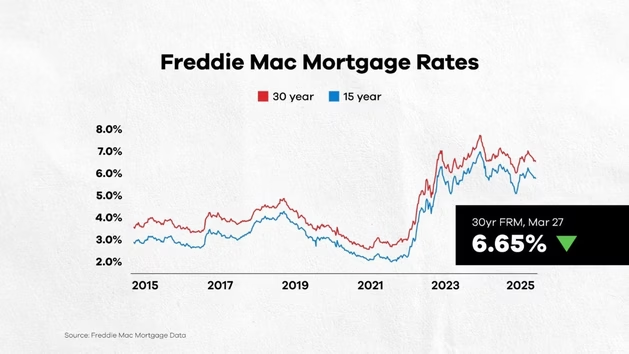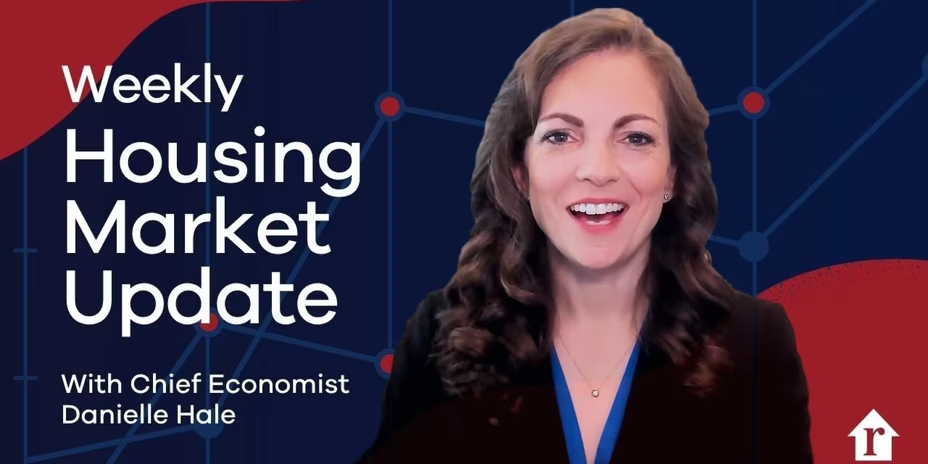Inflation continues to be a thorn in the economy’s side, and data suggests growing concern from consumers and businesses about the impact of tariffs on the broader economy.
On Friday, the PCE Index, which is the Fed’s preferred inflation gauge, was steady at an above-target pace, and the core measure received an uptick. This contrasts a bit with recent trends in consumer price index data, which had shown some progress.
Consumer confidence also fell overall, driven largely by falling expectations about the next six months, which dropped to a 12-year low.
Uncertainty about what’s ahead has kept longer-term rates relatively steady in the past month, and mortgage rates have followed suit. They dropped 2 basis points this week, continuing to hover in the 6.6% to 6.7% range.
While mortgage rates are not low, they are lower than they have been, and this likely helped push both new-home sales and pending home saleshigher month to month. 
Looking year over year, however, we see that new-home sales are up while pending home sales are down, highlighting the new-home market’s continued advantages, especially when builders are flexible on price and can offer lower-rate financing.
Taking a step back, the latest Case-Shiller data on home prices in January showed an uptick, led by cities like New York, Chicago, and Boston.
This contrasts a bit with more recent data on asking prices that have softened. In fact, the Realtor.com® weekly housing data showed that listing prices were steady even as new listings and active inventory growth continued. While the market is moving more slowly than at this time last year, the gap is narrowing.
Finally, as home prices and mortgage rates remain high, the median down payment hit a new record for Q4 and the year as a whole. The near-record amount of wealth or equity that homeowners have in their home and diverging trends in home sales by price point are contributors.
Danielle Hale is the chief economist of Realtor.com.
MARCH 28, 2025
Realtor.com





